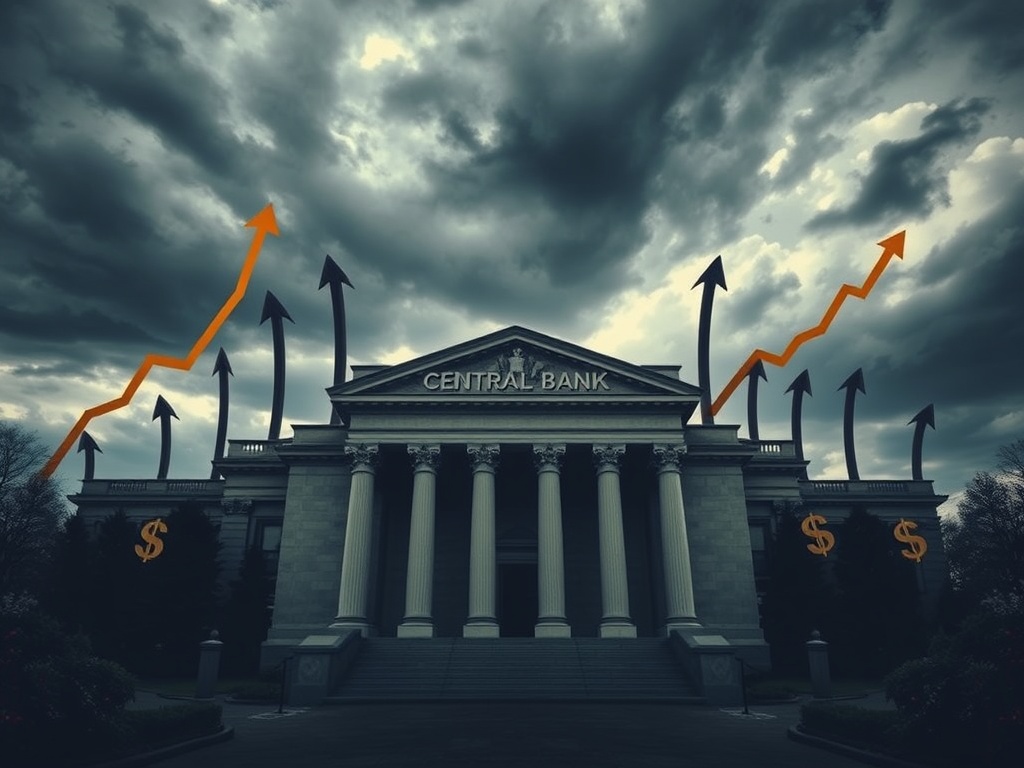Uncertainty Surrounds Future Interest Rate Cuts Following Inflation Surge

The anticipated speed and scale of future interest rate cuts from the Bank of England have come under scrutiny after inflation unexpectedly climbed to 3 percent last month. Economists had largely predicted that the inflation rate would rise from 2.5 percent to 2.8 percent, according to the latest figures released by the Office for National Statistics (ONS) on Wednesday. However, this unexpected jump has led financial traders and economic forecasters to speculate that the likelihood of multiple rate cuts this year may be diminishing.
Prior to Wednesday’s inflation data, traders were confidently forecasting two additional interest rate cuts within the year, potentially lowering the Bank of England’s base rate to 4 percent. In light of the surprising inflation figures, many analysts have since revised their expectations, expressing caution about the potential for significant rate reductions.
While inflation is projected to increase to 3.7 percent by the middle of this year, the unexpected rise raises concerns that inflation may remain stubbornly high for an extended period. This situation could mean that millions of homeowners will face higher mortgage payments for a longer duration. It also places additional pressure on Chancellor Rachel Reeves, who is relying on economic growth to adhere to her fiscal guidelines.
- Higher business taxes and the impending increase in the minimum wage—announced in last October’s Budget—are expected to contribute to rising inflation as these costs are likely to be passed on to consumers.
In response to the latest inflation data, some economic forecasters have scaled back their predictions for interest rate cuts in 2025, while others have opted to maintain their forecasts for the time being, albeit with reduced confidence. Roger Barker, director of policy at the Institute of Directors, remarked, “The latest figures cast doubt on the pace of future interest rate cuts, which the Bank of England may choose to postpone due to ongoing inflationary pressures.”
Sam Miley, the forecasting lead at the Centre for Business and Economics Research (CEBR), added, “Today’s data, along with other recent developments—such as the Bank of England’s February Monetary Policy Report, which revised growth forecasts downward and suggested inflation would peak at 3.7 percent—has led to a shift in our outlook for interest rates this year.” He noted, “Initially, we anticipated three interest rate cuts in 2025, including the one that was executed earlier this month, but we have now adjusted this expectation to two cuts.”
Ruth Gregory, deputy UK chief economist at Capital Economics, stated, “The upside surprise in January should not significantly alter the Monetary Policy Committee’s (MPC) perspective on the necessary interest rates. However, she cautioned, “As consumers are particularly sensitive to rising food prices, which they encounter weekly, the risk of sustained inflation this year could lead to a slower pace of rate cuts than anticipated, or potentially fewer cuts overall.”
Earlier this month, the Bank of England reduced interest rates from 4.75 percent to 4.5 percent, aiming to support the UK’s faltering economy, which some analysts warn may be teetering on the edge of stagflation—characterized by stagnant growth and rising inflation.
The government has prioritized economic growth in its policy-making efforts, yet the economy has been stagnating, recording a mere 0.1 percent growth for the last quarter of 2024, as reported last week. This sluggish growth will complicate the Chancellor’s ability to adhere to her fiscal policies, which dictate that day-to-day expenditures be funded through taxation rather than borrowing. With the Chancellor’s financial buffer of £9.9 billion believed to have been depleted, Reeves may face the difficult choice of either cutting public services in her fiscal statement on March 26 or raising taxes.
To explore avenues for stimulating growth, she met with investment bankers on Wednesday morning. The Office for Budget Responsibility was also set to provide an update on its forecasts, which will inform the Chancellor’s upcoming statement.
Several economists pointed to a slowdown in services inflation as a rationale for maintaining their overall forecasts, suggesting that although services inflation rose from 4.4 percent to 5 percent, this figure was still below expectations. Thomas Pugh, an economist at RSM UK, said, “We still anticipate one rate cut each quarter this year; however, the evidence of a resilient labor market and unexpectedly higher inflation increases the likelihood of only two cuts.”
Despite the headline inflation being higher than expected, the MPC is more concerned with services inflation, which was slightly less severe than their latest forecast (5 percent versus 5.2 percent). “This indicates that domestic price pressures are not as intense as the surge in the headline rate suggests, keeping the prospect of a rate cut in May very much on the table,” Pugh added.
Deutsche Bank Research continues to project four additional interest rate cuts within the year, though chief UK economist Sanjay Raja noted, “We believe the chances of a temporary pause in cuts during the second quarter are significant, especially considering the ongoing risks in the economy over the next few months.”
For millions of mortgage holders, fewer interest rate cuts this year would spell bad news. A slower pace of cuts would result in higher costs for those on variable-rate mortgages, which decrease when interest rates drop.
Homeowners on fixed-rate mortgages who are due to renew within the next year could also face increased costs. As market expectations shift towards fewer interest rate cuts, this could be reflected in swap rates, which influence the cost of fixed-rate mortgages. Some fixed-rate mortgages had begun to dip below 4 percent in recent weeks, but experts believe these opportunities might soon vanish.
Lewis Shaw, a mortgage broker at Shaw Financial Services, commented, “Today’s inflation figures are disheartening, and the UK bond market’s response will be crucial in determining how long the new sub-4 percent mortgage deals remain available. I suspect they may disappear quickly, which would be disappointing for the thousands of mortgage holders looking to renew this year in search of better rates.”
In response to these economic challenges, the Chancellor stated, “My top priority is to put more money in people’s pockets. Since the election, we’ve seen year-on-year wages after inflation increasing at their fastest rate in three years—equating to an additional £1,000 per year on average for households—but I recognize that millions of families are still struggling financially. That’s why we are committed to accelerating economic growth. By dismantling the barriers to infrastructure development, investing in rebuilding our roads, rail, and energy systems, and eliminating unnecessary regulations, we aim to stimulate growth, secure well-paying jobs, and ultimately enhance the financial well-being of our citizens.”




